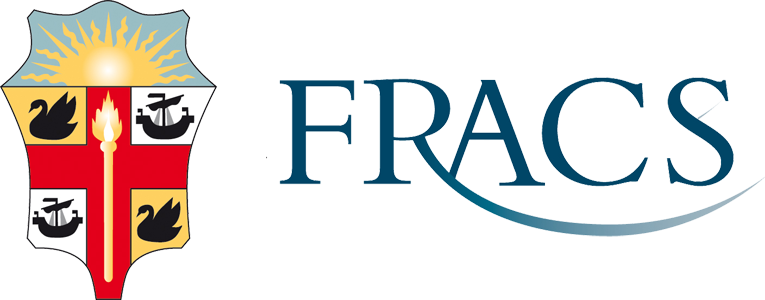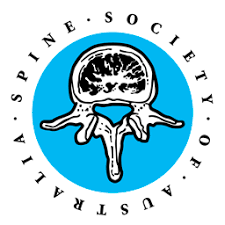Non Surgical Treatments
Leg pain can have various causes, including muscle strain, sprains, shin splints, nerve issues, clotting disorders, and more serious conditions such as peripheral artery disease or arthritis. Discussing your symptoms with an orthopaedic doctor to determine the best treatment strategy is important.
Who is Suitable for Non-surgical Treatments for Leg Pain?
Non-surgical treatments for leg pain can be suitable for a wide range of individuals, as these treatments are generally less invasive and carry fewer risks than surgical options. They can be particularly appropriate for people who:
- Have mild to moderate pain that doesn't significantly impact daily activities.
- Have leg pain resulting from muscle strains or sprains.
- Have conditions like shin splints, varicose veins, or mild nerve compression.
- Are not good candidates for surgery due to other health risks or complications.
- Prefer to try conservative management strategies before considering more invasive treatment options.
However, some conditions may eventually require surgical intervention if non-surgical treatments don't provide sufficient relief or if the condition progresses.
Benefits of Non-surgical Treatments for Leg Pain
- Fewer Risks: Non-surgical treatments generally have fewer risks than surgical procedures, including infection, blood clots, and complications from anaesthesia.
- Less Disruption: Non-surgical treatments often have shorter recovery times and cause less disruption to your daily life. For example, you can continue working and maintain your regular schedule during treatment.
- Holistic Approach: Non-surgical treatments can often be part of a comprehensive pain management plan that includes physical therapy, lifestyle changes, and other strategies to improve overall health.
- Cost-effective: In many cases, non-surgical treatments are less expensive than surgical options.
- Potential for Pain Relief: Many people find significant relief from leg pain through non-surgical treatments.
Non-surgical Treatments for Leg Pain
Below are some non-surgical treatments commonly recommended for leg pain:
- Lower Spine Injections
- Physical Therapy
- Medications
- Hot and Cold Therapy
- Assistive Devices
- Bracing or Splinting
- Lifestyle Modifications
- Orthopaedic Supports
- Transcutaneous Electrical Nerve Stimulation (TENS)
- Allied Health: Some people find relief from leg pain through alternative therapies such as acupuncture, massage therapy, chiropractic adjustments, or herbal remedies.
Lower Spine Injections
Lower spine injections, often referred to as epidural steroid injections, can be an effective treatment for certain types of leg pain, particularly when the pain is due to nerve irritation or inflammation in the lower back, such as sciatica or lumbar spinal stenosis. These conditions can cause pain to radiate down the legs, and injections can help reduce inflammation and relieve pain.
Potential benefits of lower spine injections include:
- It's a minimally invasive procedure with fewer risks than surgery.
- It can provide temporary but significant relief from leg and lower back pain.
- It can help confirm the source of the pain if it's unclear which nerves are causing symptoms.
- It can help patients progress in rehabilitation by providing enough pain relief to start or resume physical therapy.
Allied Health for Leg Pain
Allied health professionals play a crucial role in managing and treating leg pain. They collaborate with neurosurgeons and other healthcare providers to provide comprehensive patient care. Here are some allied health professionals who may be involved in the treatment of leg pain:
- Physical Therapist (PT): Physical therapists are experts in diagnosing and treating musculoskeletal conditions and movement disorders. They can design personalised exercise programs to address the underlying causes of leg pain, improve flexibility, strength, and mobility, and help patients recover from injuries or surgeries.
- Occupational Therapist (OT): Occupational therapists focus on helping patients regain independence in daily activities. They may work with individuals who have experienced leg pain to develop strategies and adaptations to perform tasks more comfortably and safely.
- Massage Therapist: Massage therapy can be beneficial for relieving muscle tension and promoting relaxation in patients with leg pain. Licensed massage therapists can use various techniques to target specific areas of discomfort and improve blood circulation.
- Podiatrist: Podiatrists specialise in diagnosing and treating foot and ankle disorders. Since leg pain can often be related to issues in the lower extremities, a podiatrist can assess the feet and ankles, prescribe orthotics, and provide treatments to alleviate pain and correct biomechanical imbalances.
- Chiropractor: Chiropractors focus on diagnosing and treating neuromuscular disorders, particularly those related to the spine. They use spinal adjustments and other manual therapies to improve nerve function and alleviate leg pain caused by nerve compression or spinal misalignments.
- Orthotist/Prosthetist: These professionals specialise in designing, fabricating, and fitting orthotic devices (braces) and prosthetic limbs. In cases where leg pain is related to a structural issue, they can create custom-made orthotics to provide support and alignment.
- Athletic Trainer: Athletic trainers are skilled in preventing, diagnosing, and treating injuries related to physical activity. They can work with athletes or active individuals to prevent leg pain caused by overuse or sports-related injuries and provide rehabilitation exercises.
- Exercise Physiologist: An exercise physiologist can assess a patient's fitness level and design exercise programs tailored to their needs. They can help patients with leg pain safely engage in physical activity to promote healing and improve overall health.
- Acupuncturist: Acupuncture is an alternative therapy that involves the insertion of thin needles into specific points on the body to promote pain relief and healing. An acupuncturist can be part of a holistic treatment plan for leg pain.
The specific allied health professionals involved in treating leg pain may vary depending on the underlying cause and the healthcare system in your region. Working with a healthcare team to address your leg pain comprehensively and effectively is important. Always consult your neurosurgeon to determine the most appropriate action for your condition.
Non-Surgical Treatments for Leg Pain Prognosis
In general, non-surgical treatments can be quite effective for relieving leg pain, especially when the pain is due to conditions like mild muscle strains or sprains, shin splints, or minor nerve irritation. Many people experience significant relief from their symptoms and can return to normal activities. For chronic conditions like arthritis or peripheral artery disease, non-surgical treatments can help manage symptoms and improve quality of life, though they may not eliminate the pain.
However, in some cases, non-surgical treatments may not provide sufficient relief, and surgical intervention may be required. Suppose the underlying cause of the leg pain is a serious condition progressing (like a severe herniated disc or advanced peripheral artery disease). In that case, non-surgical treatments may only provide temporary relief, and the pain may return or worsen over time.
Non-Surgical Treatments for Leg Pain Risks
As for risks, non-surgical treatments are generally safer and carry fewer risks than surgical treatments, but they are not without potential risks and side effects. Some potential risks of non-surgical treatments for leg pain include:
- Medication Side Effects: NSAIDs can cause stomach upset, ulcers, or kidney problems with prolonged use. Prescription pain medications, especially opioids, can cause side effects like drowsiness, constipation, and the risk of addiction.
- Injections Risks: Injections like epidural steroid injections can carry risks of infection, bleeding, allergic reaction, and in rare cases, nerve damage. Prolonged use of corticosteroid injections can lead to weakened immune systems and osteoporosis.
- Physical Therapy Risks: In some cases, physical therapy exercises could exacerbate the pain or cause injury if not done correctly. This risk can be minimised by closely working with a qualified physical therapist and following their instructions.
Before deciding, discuss any treatment's potential risks and benefits with your doctor. They can guide you in making the most appropriate choice based on your situation and health needs.
Contact Us
Hours
Monday to Friday
9.00am – 5.00pm
*This may vary on occasions or the rooms may be briefly unattended.
All Rights Reserved | Greg Malham, Neurosurgeon, BSc MBChB DMed FRACS



